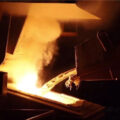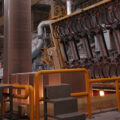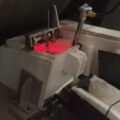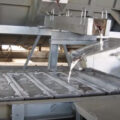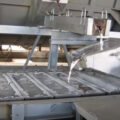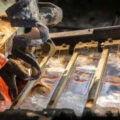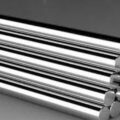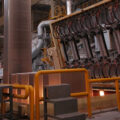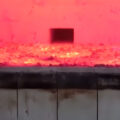Aluminum is the most abundant metal element in the earth’s crust. The density of aluminum is very small, only 2.7 g / cm, and it is malleable. It can form an oxide film to prevent metal corrosion in humid air. Aluminum can be made into a variety of shapes: rod, sheet, foil, powder, ribbon, and wire. The aluminum alloy casting has been mature in the world.

Aluminum Alloy Casting
For aluminum alloy casting, the aluminum alloy of the parts can be directly obtained by the metal melting casting process. Aluminum melting and casting include melting, purification, impurity removal, degassing, slag removal, and casting processes. The aluminum liquid drawn from the electrolytic cell contains impurities, so it needs to be purified before casting. The main process is as follows:
(1) Ingredients: According to the specific alloy grade, calculate the amount of various alloy components, and match various raw materials reasonably.
(2) Smelting: Add raw materials to the melting furnace according to the process requirements, and effectively remove the debris and gas in the melt by means of aluminum degassing and slag refining.
(3) Casting: Under certain casting process conditions, pour the melton aluminum into the models, and cool the liquid aluminum through a casting system.

Aluminum Alloy Application
Because aluminum has many excellent properties, aluminum has extremely wide applications.
(1) Various aluminum alloys, such as hard aluminum, anti-rust aluminum, cast aluminum, etc. These aluminum alloys are widely used in manufacturing industries, such as airplanes, automobiles, trains, and ships. In addition, space rockets, space shuttles, and satellites also use a large amount of aluminum and aluminum alloys.
(2) The conductivity of aluminum is second only to silver and copper. The oxide film on the aluminum surface not only has the ability to resist corrosion, but also has a certain insulation. So aluminum has a wide range of uses in the electrical appliance manufacturing industry, wire and cable industry, and radio industry.
(3) Aluminum is a good conductor of heat, and its thermal conductivity is three times greater than that of iron. Industrially, aluminum can be used to manufacture various heat exchangers, heat dissipation materials, and cooking utensils.
(4) Aluminum has good ductility, it can be made into aluminum foil, aluminum wire, aluminum strip, and various aluminum products.
(5) Due to the dense oxide protective film on the surface of aluminum, it is not easy to be corroded. So it is often used to manufacture chemical reactors, medical devices, freezing devices, petroleum refining devices, oil and gas pipelines, etc.
(6) Aluminum has a silver-white luster. And it is commonly used as a paint, so as to protect iron products from corrosion and keep beautiful.
(7) Aluminum burning can emit a lot of heat. And it is often used to make explosive mixtures, such as ammonium aluminum explosives, combustion mixtures, and lighting mixtures.
(8) Aluminum is also used as a deoxidizer in the steelmaking process. It has important applications in rocket and missile technology.
(9) The aluminum plate also has a good light reflection performance. The ultraviolet radiation is stronger than silver. The purer the aluminum, the better its reflection ability. Therefore, it is commonly used to manufacture high-quality reflectors, such as solar stove reflectors.
(10) Aluminum has sound absorption performance and good sound effects, so aluminum is also used in the ceiling of broadcasting rooms and modern large-scale buildings.
(11) Low-temperature resistance. When the temperature of aluminum is low, its strength increases instead of brittleness, so it is ideal for low-temperature device materials, such as refrigerators and freezers.




